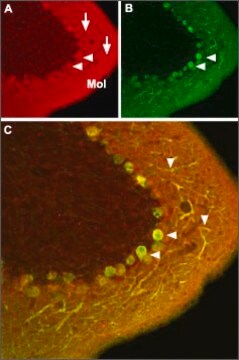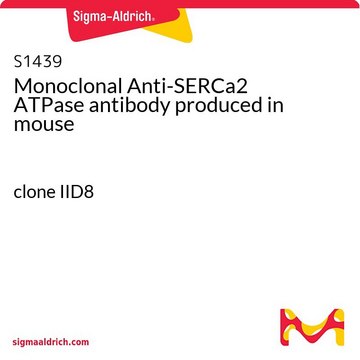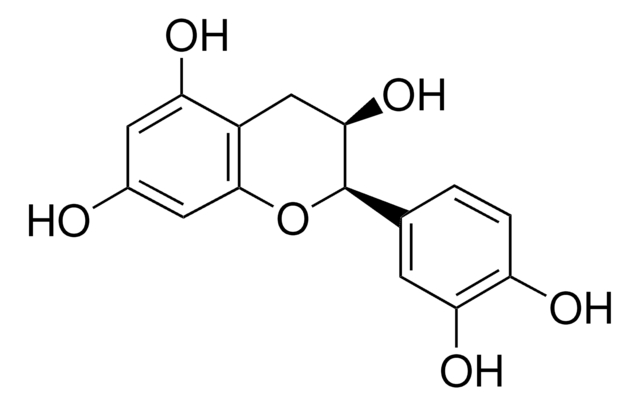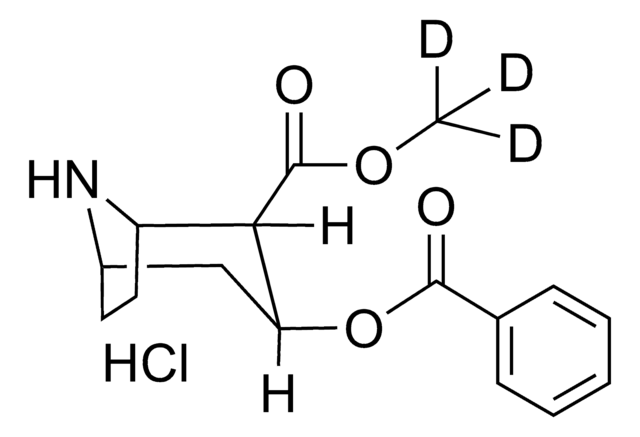C5776
Cocaine hydrochloride
Sinônimo(s):
Ecgonine methyl ester benzoate hydrochloride
About This Item
Produtos recomendados
Formulário
powder
controle de medicamentos
USDEA Schedule II; Home Office Schedule 2; stupéfiant (France); kontrollierte Droge in Deutschland; regulated under CDSA - not available from Sigma-Aldrich Canada; estupefaciente (Spain); Decreto Lei 15/93: Tabela IB (Portugal)
aplicação(ões)
forensics and toxicology
cadeia de caracteres SMILES
Cl.COC(=O)[C@H]1[C@H](C[C@@H]2CC[C@H]1N2C)OC(=O)c3ccccc3
InChI
1S/C17H21NO4.ClH/c1-18-12-8-9-13(18)15(17(20)21-2)14(10-12)22-16(19)11-6-4-3-5-7-11;/h3-7,12-15H,8-10H2,1-2H3;1H/t12-,13+,14-,15+;/m0./s1
chave InChI
PIQVDUKEQYOJNR-VZXSFKIWSA-N
Procurando produtos similares? Visita Guia de comparação de produtos
Aplicação
- in saline control to study the effects of cocaine self-administration in mouse brain
- as adopamine (DA), noradrenaline (NA), and serotonin (5-HT) reuptake inhibitor to evoke neurotransmitter release in artificial fish cerebrospinal fluid (aCSF)
- to examine conditioning to intravenous cocaine hydrochloride
Ações bioquímicas/fisiológicas
Características e benefícios
Palavra indicadora
Danger
Frases de perigo
Declarações de precaução
Classificações de perigo
Acute Tox. 2 Inhalation - Acute Tox. 2 Oral - Repr. 2 - STOT SE 3
Órgãos-alvo
Central nervous system
Código de classe de armazenamento
6.1A - Combustible acute toxic Cat. 1 and 2 / very toxic hazardous materials
Classe de risco de água (WGK)
WGK 3
Ponto de fulgor (°F)
Not applicable
Ponto de fulgor (°C)
Not applicable
Equipamento de proteção individual
Eyeshields, Faceshields, Gloves, type P3 (EN 143) respirator cartridges
Escolha uma das versões mais recentes:
Já possui este produto?
Encontre a documentação dos produtos que você adquiriu recentemente na biblioteca de documentos.
Nossa equipe de cientistas tem experiência em todas as áreas de pesquisa, incluindo Life Sciences, ciência de materiais, síntese química, cromatografia, química analítica e muitas outras.
Entre em contato com a assistência técnica










